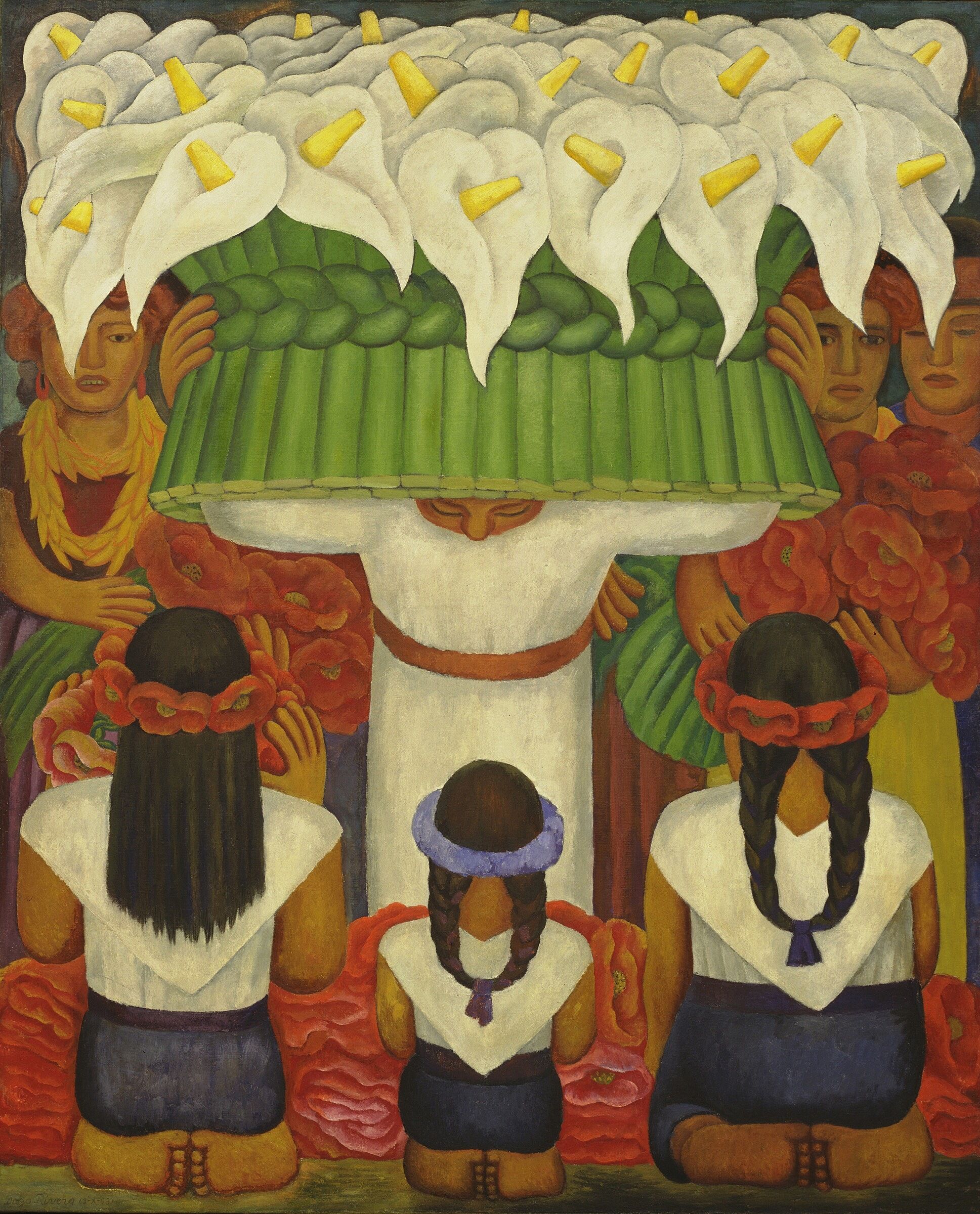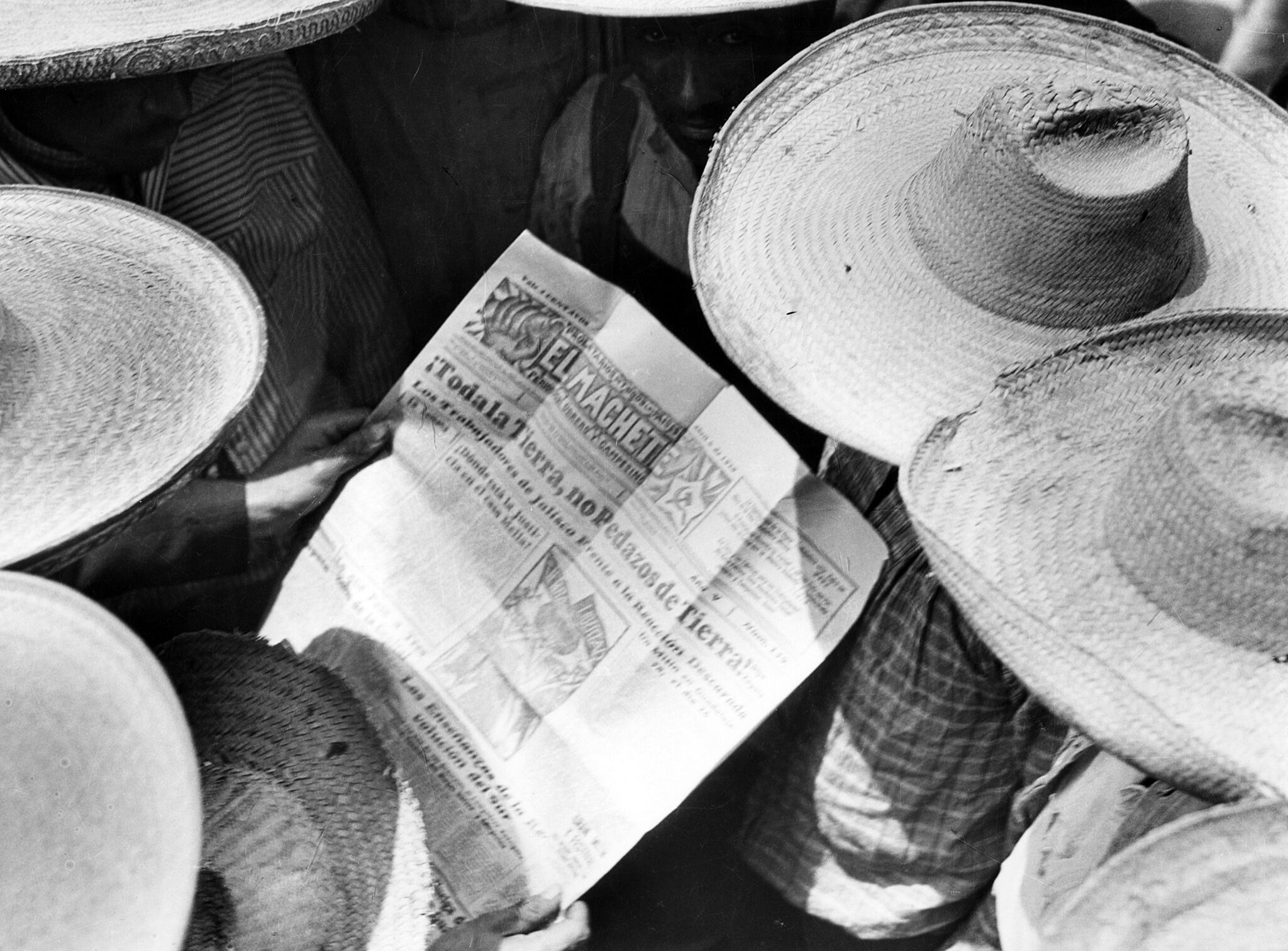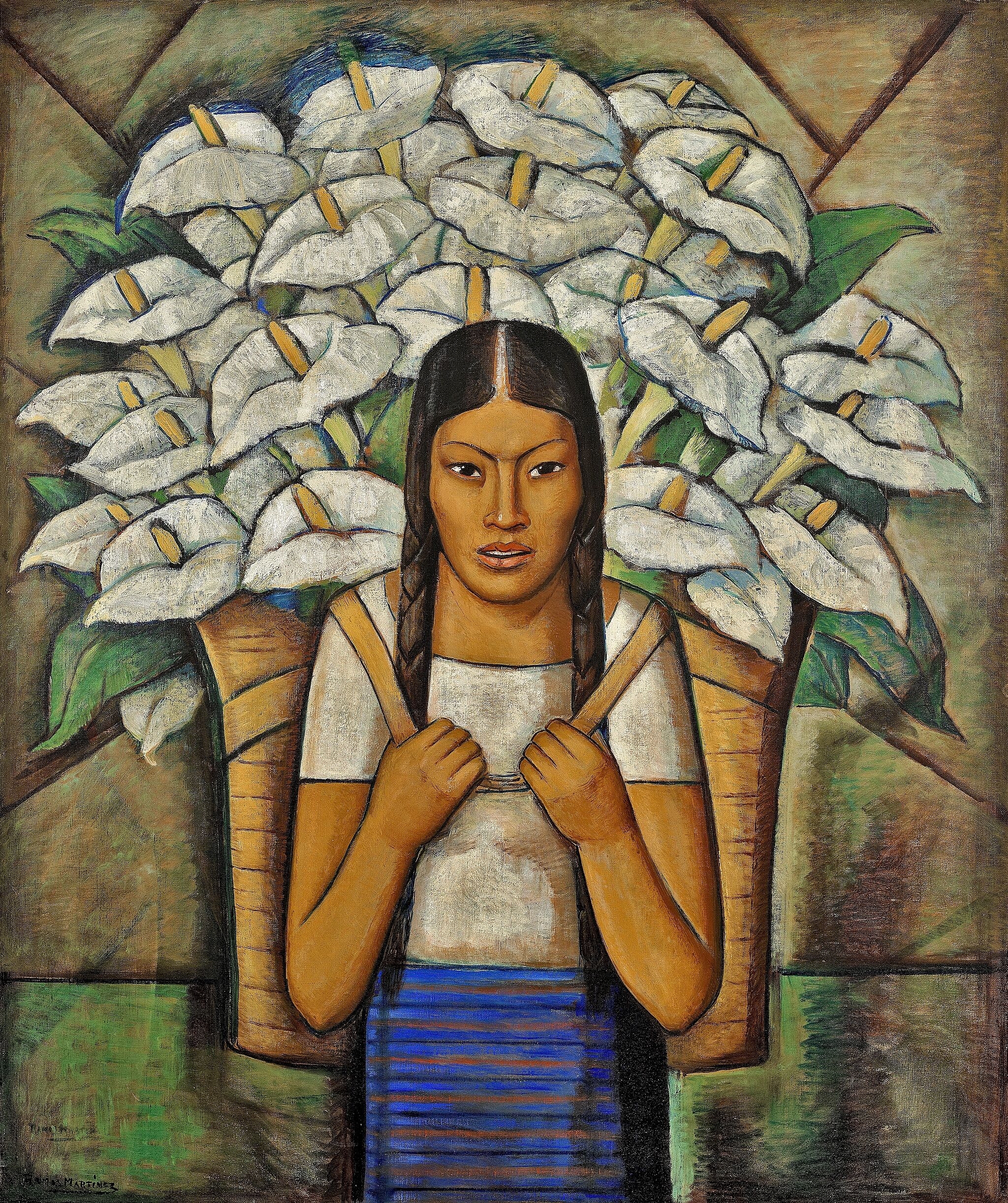América: Mexican Muralism and Art in The United States, 1925–1945
Barbara Haskell, curator
Related exhibition
The exhibition Vida Americana: Mexican Muralists Remake American Art, 1925–1945 is on view February 17 through May 17, 2020
Out of the fragile peace that emerged in 1920 at the end of the Mexican Revolution came a cultural transformation that was hailed as the “greatest Renaissance in the contemporary world.”Frank Tannenbaum, “Mexico–A Promise,” The Survey “Graphic Number” 52, no. 3 (May 1, 1924): 132.At the center of Mexico’s “new efflorescence” were the monumental public murals commissioned by the newly installed government of President Álvaro Obregón that depicted the history and everyday life of the nation’s people.Ernest Gruening, Mexico and Its Heritage (New York: Century Co., 1928), 635.By portraying social and political subject matter with a pictorial vocabulary that celebrated the country’s pre-Hispanic traditions, the murals invested the age-old technique of fresco painting with a bold new vitality that rivaled the avant-garde trends sweeping through Europe, while at the same time establishing a new relationship between art and the public by telling stories that were relevant to ordinary women and men. Nothing in the United States compared. Enthralled, American visitors to Mexico flooded journals such as The Nation, New Masses, and Creative Art with effusive reports about the murals. “Mexico is on everyone’s lips,” photographer Edward Weston reported. “Mexico and her artists.”Edward Weston, The Daybooks of Edward Weston, ed. Nancy Newhall (New York: Aperture, 1973), 2:244.Waves of American artists flocked to Mexico to see the murals for themselves and to work with the muralists. But as political tensions flared following the end of Obregón’s term in 1924 and mural commissions declined, the muralists turned to the United States for patronage. Between 1927 and 1940, Mexico’s three leading muralists—José Clemente Orozco, Diego Rivera, and David Alfaro Siqueiros—came to the United States to execute lithographs and easel paintings, exhibit their art, and create large-scale murals on both the East and West coasts and in Detroit. Their influence would prove decisive for American artists searching for alternatives to European modernism and seeking to connect with a public deeply shaken by the onset of the Great Depression and the economic and social injustices exposed by the collapse of the U.S. stock market. As artist and critic Charmion von Wiegand declared in 1934, Mexican artists were “a more creative influence in American painting than the modernist French masters. . . . They have brought painting back to its vital function in society.”Charmion von Wiegand, “Mural Painting in America,” Yale Review 23, no. 4 (June 1934): 790–91, 799.
The Mexican Renaissance followed the devastation of the country’s ten-year civil war, in which an estimated one in ten Mexicans died and tens of thousands fled, many to the U.S. The series of assassinations, coups, and armed conflicts that had erupted after the 1910 ouster of Porfirio Díaz, the dictator who had ruled the country for thirty-one years, would ultimately yield a new constitution that ratified a sweeping spate of reforms, among them Marxist-oriented policies that sought to reduce the influence of the Catholic Church, empower labor unions, and redistribute the holdings of wealthy landowners. The uneven implementation of these reforms and the conservative backlash they inspired led to an unstable political situation. To achieve unity in a country made up of hundreds of ethnic groups with no common culture and many different languages, officials in the incoming Obregón administration and their allies realized the government needed to construct a shared understanding of Mexican identity and national history, one in which the country’s Indigenous peasant population was recast into a bedrock role. “Let the native be the basic unit of the economic and cultural ideal,” exhorted anthropologist Manuel Gamio. “Every inhabitant must identify himself in spirit with the peasant if he would call himself a legitimate son of the land.”Manuel Gamio, paraphrased in Anita Brenner, Idols behind Altars (New York: Harcourt, Brace & Co., 1929), 230.Native crafts were the peasants’ art. More importantly, they were the art form seen as least contaminated by foreign modes. To celebrate this “most Mexican aspect of Mexico,” the Obregón administration levied a one-time tax on the wealthy to sponsor a 5,000-object Exhibition of Popular Arts in connection with the 1921 centennial of Mexico’s independence from Spain.Gerardo Murillo (“Dr. Atl”), paraphrased in Rick A. López, Crafting Mexico: Intellectuals, Artisans, and the State after the Revolution (Durham, NC: Duke University Press, 2010), 88.To ensure that their selections expressed the essential spirit of the Mexican people, the show’s organizers excluded objects that exhibited overt signs of modern or foreign influence. Sensing an opportunity to boost Mexico’s image in the U.S., Obregón funded the exhibition’s travel to Los Angeles, selecting as the catalogue’s author the American writer and occasional Mexican resident Katherine Anne Porter, who described vernacular art as representing the “unbroken record of [the Mexican peasant’s] racial soul.”Katherine Anne Porter, Outline of Mexican Arts and Crafts (Los Angeles: Young & McCallister, 1922), 4.The exhibition’s two-week run in L.A. was a sensation, fueling the commercial vogue for Mexican curios in the U.S. and codifying the equation between the “real” Mexico and its native population, who seemed from afar to possess a purity, divine gentleness, and innate sense of harmony and beauty that connected with a deeper past rooted in ancient traditions.
This vision of Mexico captured the American imagination as an antidote to the rootlessness and isolation of modern urban and industrial life. Since the turn of the twentieth century, American intellectuals had voiced concern that the country’s materialism and its obsession with individual achievement had deprived the average citizen of the sense of “wholeness” that comes from being part of an organic society. The accelerated growth of consumerism and mass-media culture in the 1920s led to extensive public debates about the drawbacks of modern life, as exemplified in Robert and Helen Lynd’s widely read 1929 book Middletown, the couple’s sociological study of the small American city of Muncie, Indiana, whose inhabitants they described as isolated within a community of fraying social ties. American intellectuals in Mexico such as Anita Brenner, Frances Toor, Stuart Chase, and Carleton Beals contrasted this isolation with life in Mexico’s rural villages, which they saw through a romantic lens as an Eden populated by people intimately connected to the land who were guided by an uncorrupted innocence and authenticity. Toor did so in Mexican Folkways, the bilingual journal she published in Mexico City from 1925 to 1937; Brenner in articles and in her highly influential 1929 book, Idols behind Altars; and Chase and Beals in their 1931 bestselling books, Mexico: A Study of Two Americas and Mexican Maze, respectively. Writing as if “enchanted and convinced by a miracle,” as one critic put it, these authors valorized Mexico’s small-scale agrarian communities as spiritually superior to the regimentation and alienation of modern urban life.Katherine Anne Porter, “Old Gods and New Messiahs,” New York Herald Tribune, September 29, 1929.Unlike Americans who live in “compartments of uncorrelated action,” the life of the Mexican peasant “is one texture,” Beals wrote. “The day, for him, is woven into a unity, satisfying in its completeness.”Carleton Beals, Mexican Maze (New York: Book League of America, 1931), 117.The sentiment was echoed by Chase, whose Study of Two Americas compared the Lynds’ Middletown with the Southern Mexican village of Tepoztlán. Values in Tepoztlán, Chase wrote, are grounded “in innately valuable things. . . . To the village Mexican, life lies clear and sharp beneath his eyes. . . . The future hangs like a great black raven over Middletown. In Tepoztlán the sky is clear. . . . We are cluttered up with things essentially meaningless, and, being human, we flounder, puzzled and perplexed, trying to find the values which will give meaning back to life. Tepoztlán . . . never bothers its head about the meaning of life. It lives.”Stuart Chase, Mexico: A Study of Two Americas (New York: Macmillan, 1931), 221–24.Even as a number of left-wing critics dismissed the work of these authors as a primitivizing, “Mexico-as-noble-savage” school that ignored the brutal realities of peasant life, the popularity of such books spoke to a widespread longing in America for a simpler, more spiritually authentic and connected way of living.John A. Britton, Revolution and Ideology: Images of the Mexican Revolution in the United States (Lexington: University Press of Kentucky, 1995), 120. Britton’s phrase was specifically directed toward Joseph Freeman’s “The Well-Paid Art of Lying,” New Masses 7, no. 5 (October 1931): 10–11.Yet whatever veneration for Mexican culture these authors’ glowing appraisals inspired, too often it failed to extend to people of Mexican descent living in the United States. Subject to racist hostilities and exploitative labor practices, their situation grew dire during the early years of the Great Depression, when state and local governments across the country, acting upon President Herbert Hoover’s call for “American jobs for real Americans,” initiated campaigns to send Mexican Americans to Mexico, either through voluntary means or forced deportation. It is estimated that as many as two million people were subject to “repatriation,” as the purges were euphemistically called, even though it is thought that well over half were birthright citizens of the U.S.
Meanwhile in Mexico, the idealized image of peasant life was being reinforced by native-born Mexican artists, such as Rivera, Miguel Covarrubias, Frida Kahlo, and Alfredo Ramos Martínez, as well as by foreigners such as Edward Weston, Tina Modotti, Sergei Eisenstein, and Paul Strand. Cognizant of the centrality of the revolution to the myth of the new Mexico, these artists balanced their romanticized portrayals of peasants with visual narratives of the suffering and oppression the population had endured under Spanish rule and the dictatorship of Díaz, and the people’s heroic struggle for emancipation. Nowhere was this more true than in the public murals commissioned by the government’s Department of Public Education under the leadership of renowned philosopher and writer José Vasconcelos. Many of the artists Vasconcelos hired were Communists who had fought in the revolution and whom Siqueiros, Rivera, and Xavier Guerrero organized in 1922 into a trade union, the Syndicate of Technical Workers, Painters, and Sculptors. The organization’s manifesto, authored by Siqueiros, explicitly repudiated “so-called easel painting and every kind of art favored by ultra-intellectual circles, because it is aristocratic, and we praise monumental art in all its forms, because it is public property.”The 1922 manifesto is published in English in David Alfaro Siqueiros, Art and Revolution, trans. Sylvia Calles (London: Lawrence and Wishart, 1975), 24–25.It further proclaimed that “at this time of social change from a decrepit order to a new one, the creators of beauty must use their best efforts to produce ideological works of art for the people; art must no longer be the expression of individual satisfaction which it is today, but should aim to become a fighting, educative art for all.” Artists from across Mexico and around the world rallied to this cause, but it would be Rivera, Orozco, and Siqueiros who would become the most important figures, and in particular Rivera, whose virtual dominance of commissions by the late 1920s led some contemporary observers to misdiagnose Mexican muralism as a homogenous movement possessed of “one idea, one aesthetics and one objective.”Octavio Paz, quoted in Rita Eder, “Against the Laocoon: Orozco and History Painting,” in José Clemente Orozco in the United States, 1927–1934, ed. Renato González Mello and Diane Miliotes (Hanover, NH: Hood Museum of Art, 2002), 230.
That was not the case, although Rivera’s remarkable output between 1923 and 1928 and its dissemination in the press garnered him a reputation in the United States as “Mexico’s greatest painter” whose work conveyed “the spirit of Mexico.”Bertram D. Wolfe, “Art and Revolution in Mexico,” The Nation 119, no. 3086 (August 27, 1924): 207; Gruening, Mexico and Its Heritage, 640.The artist’s epic narratives of Mexican history mythologized the country’s peasantry and the revolution. Using high-key color, stylized, volumetric figures, and a modern “montage” aesthetic to depict the trials and heroic triumphs of Mexico’s Indigenous people and to celebrate their popular culture, he provided the nation with a vision of itself as a unified country with a shared past, present, and future. Orozco, in contrast, depicted the struggle for liberation as one of tragedy and stifled promise, the monumental, eerie stillness of his revolutionary scenes exuding not hope but resignation and despair. Siqueiros, the youngest of los tres grandes (The Three Greats), as the three leading muralists were called, focused primarily on labor organizing during the 1920s rather than on artmaking. Nevertheless, as secretary general of the Syndicate and executive director of its journal, El Machete, he played a seminal role during this period in articulating the artistic and political goals of Mexican muralism through his texts and speeches. Once he returned to painting in 1930, he harnessed rough textures, resonant dark tonalities, and sculpturally modeled figures rooted in pre-Hispanic forms to forge a politically and aesthetically revolutionary art.
In 1924, Plutarco Elías Calles succeeded Obregón as Mexico’s president. Primarily focused on the country’s economy, he eliminated mural commissions for all but Rivera. Orozco was the first of los tres grandes to come to the United States in search of patronage.
This essay is excerpted from Vida Americana: Mexican Muralists Remake American Art, 1925–1945, edited by Barbara Haskell, published by the Whitney Museum of American Art in association with Yale University Press © 2020.



